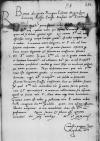Letter #1746
Bona Sforza to Ioannes DANTISCUSCracow (Kraków), 1537-10-13
| received [1537]-10-20 Manuscript sources:
Auxiliary sources:
| ||||||||||
Text & apparatus & commentary Plain text Text & commentary Text & apparatus
Reverendo in Christo Patri, domino
Reverende in Christo Pater, sincere nobis dilecte.
Accepimus litteras Paternitatis Vestrae, quibus nobis pro episcopatu Varmiensi, nostra opera ad se delato, gratias agit. Qui animus Paternitatis Vestrae, tam officiosus tamque accepti beneficii gratus, est nobis acceptus ac iucundus. Curavimus autem diligenter, ut Paternitas Vestra ad hunc episcopatum eveheretur, quem illi ex animo favimus cupimusque hanc novam dignitatis et fortunarum accessionem feliciter Vestrae Paternitati evenire. In qua Paternitas Vestra, ut in gratia Domini Dei et hominum benevolentia ad utilitatem ecclesiae suae ac ad rei publicae commodum praesideat multosque annos felix ac incolumis exigat ex animo precamur. Non dubitamus vero, quin Vestra Paternitas novo isto dignitatis gradu et ornamento amplioris fortunae decorata
Gratum autem est nobis, quod pollicetur Vestra Paternitas mittere nobis velle imaginem serenissimae
Quam sanam et felicem esse optamus.
Commissio propria sacrae reginalis maiestatis

